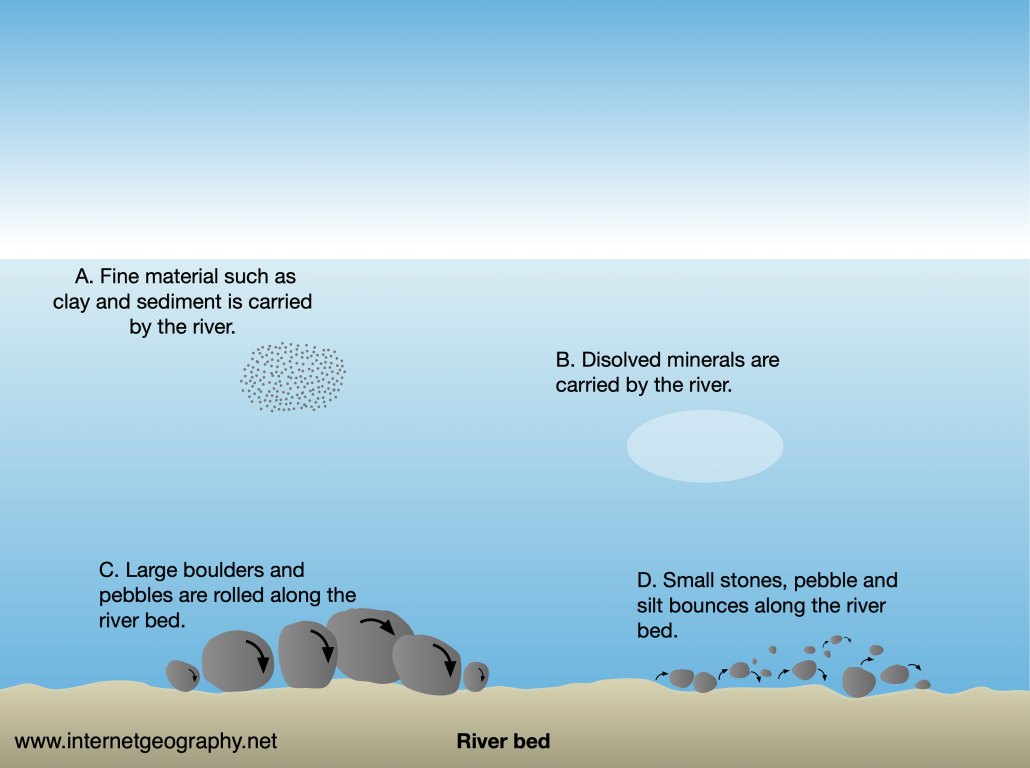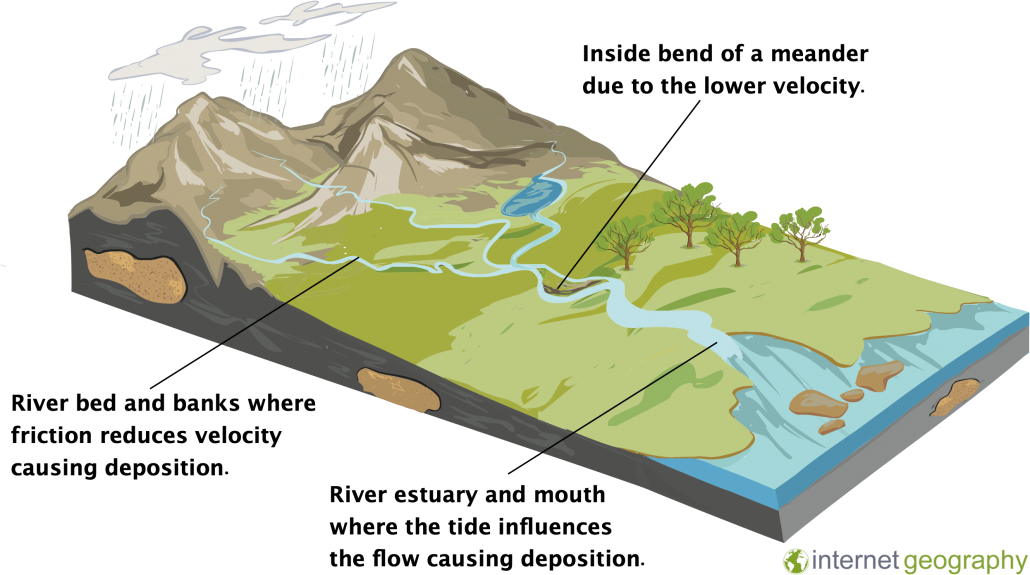Fluvial processes
Weathering and Mass Movement
Rivers have been instrumental in shaping the landscape of drainage basins, primarily through the fluvial erosion, transportation, and deposition processes. However, weathering and mass movement are two additional vital processes shaping the landscape in drainage basins.
Weathering is the in-situ (without movement) breakdown of rocks. Examples include:
- Physical weathering, like freeze-thaw action
- Chemical weathering due to slightly acidic rainwater interacting with rocks
- Biological weathering, especially by plant and tree root systems gradually splitting rocks, also plays a vital role in drainage basins.
Mass movement involves the large-scale displacement of weathered materials under gravity. This movement supplies weathered material to rivers, which:
- Adds more material to a river’s load
- Increases erosion in the upper course
- Enhances deposition in the middle and lower courses. The two primary types of mass movement in drainage basins are slumping and soil creep.
Energy and Processes
- Approximately 95% of a river’s energy is expended to overcome friction.
- The remaining 5% is used for the erosion of the river channel and the transportation of eroded material downstream. A river’s energy levels depend on a) the volume of water in the river and b) the speed of the water flow.
- Most friction occurs when the water contacts the bed and the banks. Rocks and boulders on the bed increase the amount of friction.
River channels are shallow and narrow near the source, with beds often cluttered with boulders and highly uneven, resulting in high friction and slower water flow than downstream where the channel is a) wider, b) deeper, and c) less uneven.
Erosion
There are four key erosion processes:
- Hydraulic action: The removal of loose material from the river bed and banks by the sheer force of the river water.
- Abrasion: The wearing down of the bed and banks by the river’s load.
- Attrition: The process where rocks and stones collide with each other and the bed and banks in swirling water, gradually becoming smoother and smaller.
- Solution: Certain rocks like limestone slowly dissolve in river water.
A river carves deep into its bed close to its source, forming a valley through vertical erosion. However, lateral or sideways erosion takes precedence, broadening the valley in the middle and lower courses of the river. Erosion is most pronounced when the river’s discharge is high, often during flooding.
Transportation
A river can move its load via four processes: traction, saltation, suspension, and solution.
Solution – minerals are dissolved in the water and carried along in solution. This typically occurs in areas where the underlying bedrock is limestone or chalk.
Suspension – fine, light material such as alluvium is carried in the water. This is known as suspended load. The load bounces in line with the rise and fall in the river’s velocity.
Saltation – small pebbles and stones are bounced along the river bed.
Traction – large boulders and rocks are rolled along the river bed. The load carried this way is called bed load. Parts of the load carried by traction during low discharge may be transported by saltation when discharge is high.
Deposition
Deposition occurs when a river no longer has the energy to carry its load. This can happen when:
- The gradient becomes less steep
- The discharge decreases during a dry spell
- The current slows down on the inside of a meander
- The river flows into a lake or the sea.
When a river’s energy diminishes, the larger, heavier material, referred to as the bedload, is the first to be deposited. Lighter materials are carried further. The deposited gravel, sand, and silt, collectively known as alluvium, are spread across the floodplain. The solution load and most of the clay, the lightest suspended particle, are carried out to the sea.


